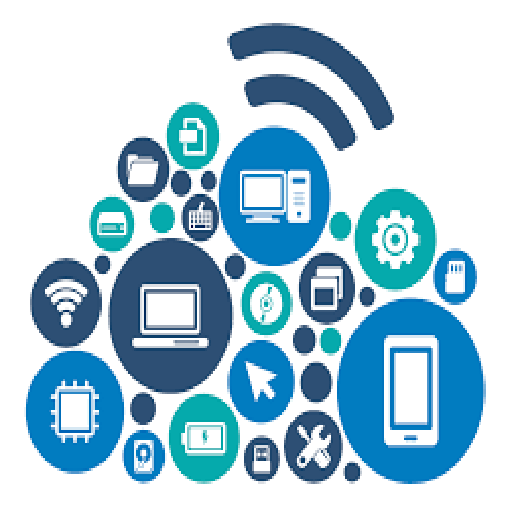Student Learning and the Role of Information and Communication Technology (ICT) in 21st Century: A Review
Abstract
In the last few decades, Information Technology has transformed the entire world into a village, known as Global Village, as proposed by Marshal McLuhan. ICT has increased its influence in every field like the education sector, defense sector, technology etc. In the 21st century, information and communication technology (ICT) has become an important and integral part of most educational organizations throughout the world.. The use of ICT in classroom teaching and learning processes has become indispensable as it gives teachers and learners the opportunity to operate, store, control and retrieve data in addition to promoting self-regulated and active learning. (Ali, Haolader & Muhammad, 2013) Today we are dependent on technology and the role of ICT is increasing day by day and is believed to be a new normal. Keeping that in view, the present paper attempts to examine the relationship between information and communication technologies (ICT) and student learning. This conceptual paper is based on secondary information collected from different sources such as books, journal articles, newspapers, reports of various government organizations, non-governmental organizations and soon.
References
Agarwal R. and Day, A. E. (1998). The Impact of the Internet on Economic Education, Journal of Economic Education. 29(2), pp. 99-110.
Butcher, N. (2003). Technological Infrastructure and Use of Information and Communication Technology in Education in Africa: An Overview, Paris: ADEA
Carle, D. Jaffee and D. Miller, "Engaging college science students and changing academic achievement with technology: A quasi experimental preliminary investigation", Computers & Education, vol. 52, no. 2, pp. 376-380, 2009.
Collis, B. (1989). Using information technology to create new educational situations.(Pp. 19). Paris: UNESCO International Congress on Education and Informatics. Cross.
Faloye, J.O., & Oparah, O. B. (2007). Relevance of Information and Communication Technology (ICT) in Education in Ikere, Journal of Education, vol. 9, No.1, pp. 37-42.
Galbreath, J. (2000). Knowledge management technology in education: An Overview, Education Technology, 40(5), 28 -33
Kolade, O. T., & Omodara, O. D. (2007). Developing a Monitoring and Evaluation Plan of Information Communication Technology ICTS in Education System in Special Edition on Information Communication Technology (ICT), Ikeja: pp. 176-181.
Kirkpatrick, H., & Cuban, L. (1998). Computers Make Kids Smarter—Right?, TECHNOS Quarterly for Education and Technology. 7(2), pp.1–11
Leagans, J.P. (1961). Characteristics of teaching and learning in Extension Education, Extension Education in Community Development, Directorate of Extension, Govt. of India, New Delhi.
Larsen, K. and Vincent-Lancrin, S. (2005). The impact of ICT on tertiary education: Advances and promises. A paper presented at the Organisation for Economic Co-operation and Development (OECD) /NSF/U.
Michigan Conference “Advancing Knowledge and the Knowledge Economy” 10-11 January 2005, Washington DC [13]. Machin, S. et al. (2006) „New technologies in schools: Is there a pay off? ‟, Germany: Institute for the Study of Labour. Accessed at: http://ftp.iza.org/dp2234.pdf#search=%22New%20technologies%20in%20schools%3A%20Is%20there%20a%20pay%20off%3F% 20%22 [
National Policy for ICT in School Education (2012), Retrieved from- http://mhrd.gov.in/sites/upload_files/mhrd/files/upload_document/revised_policy%20document%20ofICT.pdf
NCTE (2002). ICT initiatives of the NCTE Discussion Document. New Delhi: National Council For Teacher Education.
Okeh O. D. & Opone, M. C. (2007). Information and Communication Technology (ICT): A veritable tool for national Educational Growth, Journal of Academics, 2(3), 234 – 246.
Rockoff, j. e. (2004). “The Impact of Individual Teachers on Student Achievement: Evidence from Panel Data”. American Economic Review Papers and Proceedings. Vol. 94, no. 2, pp. 247-252
Sharma, R. (2003), 'Barriers in Using Technology for Education in Developing Countries', IEEE0-7803-7724-9103.Singapore schools', Computers & Education Vol .41, No.(1),Pp; 49--63.
Smeets, E. (2005). Does ICT contribute to powerful learning environments in primary education? Computers & Education, No. 44,Pp; 343-355.
Shukla, Bhavna (2016). ICT in Education: Visions and Realities. Agra: Agrawal Publication. SWAYAM Portal www.swayam.gov.in
Talley, D. (2000). Technology and Teaching: Learning in a High-Tech Environment, presented at the Midwest Economics Association, Chicago
Wheeler, S. (2001). Information and communication technologies and the changing role of the teacher. Journal of Educational Media, Vol. 26, No.(1), Pp;7-17.
Yusuf, M.O. (2005). Information and Communication Education: Analyzing the Nigerian National Policy for Information Technology. International Education Journal, Vol. 6, No. 3, pp. 316-321.

Copyright (c) 2020 Jaspreet Singh, Amir Shamim Shiekh, Manmeet Kour, Pankaj Kumar

This work is licensed under a Creative Commons Attribution 4.0 International License.
In submitting the manuscript to the International Journal on Integrated Education (IJIE), the authors certify that:
- They are authorized by their co-authors to enter into these arrangements.
- The work described has not been formally published before, except in the form of an abstract or as part of a published lecture, review, thesis, or overlay journal.
- That it is not under consideration for publication elsewhere,
- The publication has been approved by the author(s) and by responsible authorities – tacitly or explicitly – of the institutes where the work has been carried out.
- They secure the right to reproduce any material that has already been published or copyrighted elsewhere.
- They agree to the following license and copyright agreement.
License and Copyright Agreement
Authors who publish with International Journal on Integrated Education (IJIE) agree to the following terms:
- Authors retain copyright and grant the International Journal on Integrated Education (IJIE) right of first publication with the work simultaneously licensed under Creative Commons Attribution License (CC BY 4.0) that allows others to share the work with an acknowledgment of the work's authorship and initial publication in this journal.
- Authors can enter into separate, additional contractual arrangements for the non-exclusive distribution of the International Journal on Integrated Education (IJIE) published version of the work (e.g., post it to an institutional repository or edit it in a book), with an acknowledgment of its initial publication in this journal.
- Authors are permitted and encouraged to post their work online (e.g., in institutional repositories or on their website) before and during the submission process, as it can lead to productive exchanges, as well as earlier and greater citation of published work.











